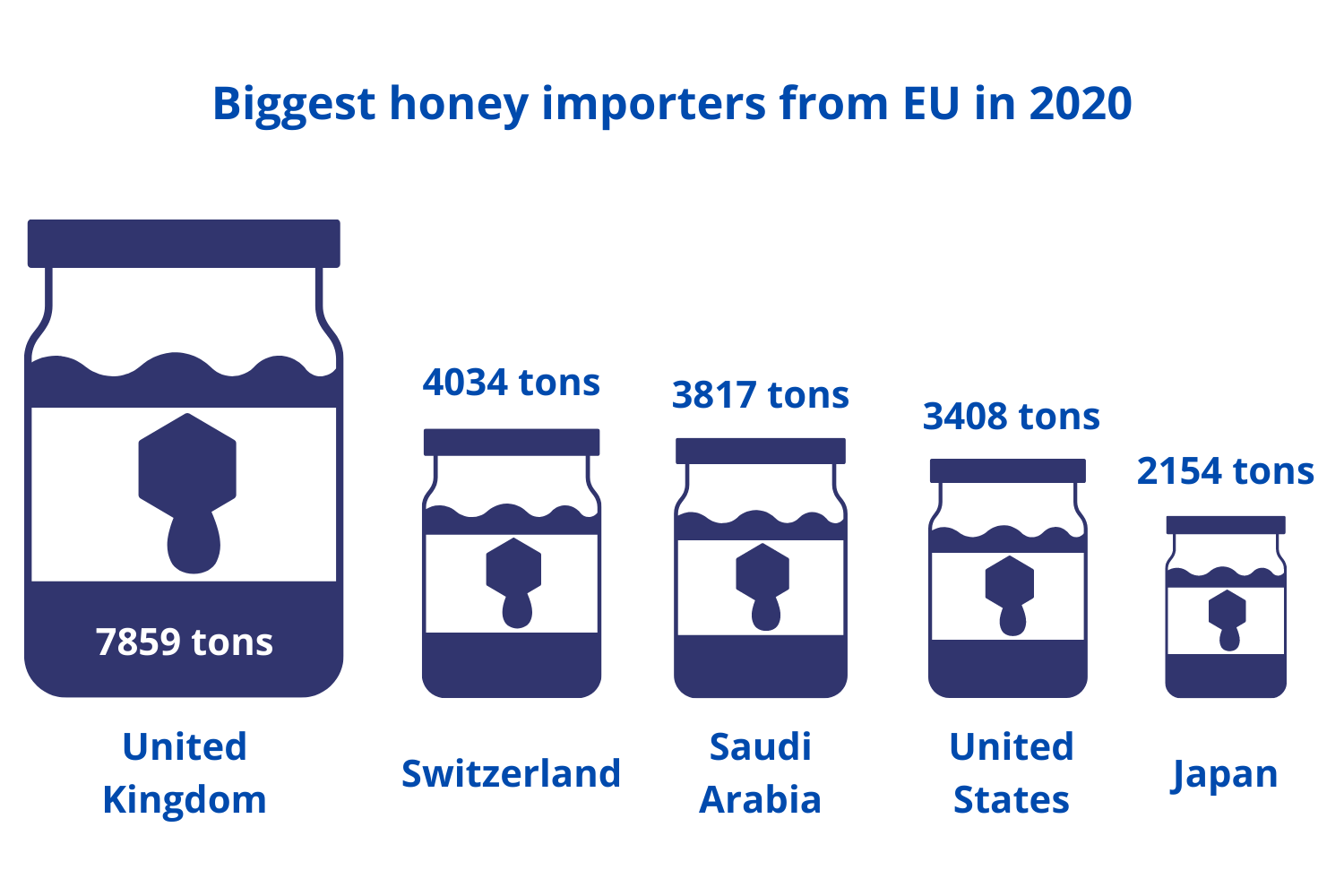The honey market in the European Union
According to Eurostat, the European Union is the second-largest honey producer in the world, behind China. In 2020, 18.9 million hives produced 280 thousand tons of honey. There were over 615 thousand beekeepers in the European Union.
In terms of the number of hives, Spain is the leader in Europe. In 2020 there were almost 3 million hives in Spain. Romania came second with over 2.2 million hives, while Poland came third with over 1.7 million hives.

Source: European Commission
In terms of the number of beekeepers, Germany is at the forefront of the EU, with over 129 thousand of them. Poland follows it with over 73 thousand beekeepers. The Czech Republic is at the end of the list, with 61.5 thousand beekeepers. Despite the largest number of hives among European countries, Spain ranks only 7th in terms of the number of beekeepers, with 28.7 thousand beekeepers.
The average number of hives per beekeeper in the European Union is 21. This value is the highest in Greece, where it is 147. Next comes Spain with 103, while Romania is third with 80 hives per beekeeper.
FOREIGN TRADE OF HONEY
The growing cheap import of this product from China is undoubtedly a challenge for the European honey market. In 2021, the average price per kilogram of Chinese honey was only EUR 1.27. According to the Polish National Council of Agricultural Chambers, this is due to differences in the production method and the addition of sugar syrup to honey.
In 2020, a total of 177 thousand tons of honey were imported to the European Union, of which almost 55 thousand tons (30.9% of total imports) came from Ukraine and 39 thousand tons from China (22% of total imports). The countries that import the most honey from outside the European Union – despite their own production – are Germany, Poland, and Belgium.
At the same time, European countries export their honey production mainly to countries such as Saudi Arabia, Switzerland, and the United Kingdom. Total honey exports from the European Union amounted to over 7.8 thousand tons. The largest exporters of honey from the EU in terms of quantity in 2020 were: Poland with a share of 35.7% (2.8 thousand tons), Germany with 15.7% (1.2 thousand tons) and Spain with 13.1% (1 thousand tons).

Source: European Commission
NOT ONLY HONEY
The European Commission reports that thanks to bees, the revenues of European agriculture are increasing by at least EUR 22 billion a year. In addition to honey, bees also help produce other products such as pollen, propolis, royal jelly and wax. Moreover, it is estimated that bees pollinate over 80% of crops and wild vegetation in Europe. Therefore, the European Union works to support the protection of bees. These include restrictions on the use of pesticides that are toxic to bees, support for research into their health, and monitoring of their mortality in EU countries.
Author: Luiza Rach
Sources:
Bee health, European Food Safety Authority.
Honey bees, European Comission.
Honey Market Presentation, Spring 2021, European Comission.
Producenci miodu w Unii Europejskiej biją na alarm (Honey producers in the European Union are sounding the alarm), www.portalspożywczy.pl.
This text is not a complete market analysis that we do for our clients.
This publication contains only selected market information, which we can deepen and extend on an individual request.
Let’s talk about how market research can help your business to grow!




